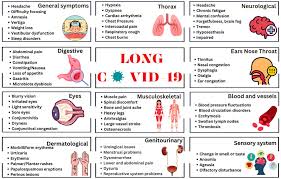Understanding Covid Symptoms in 2025

Introduction
As the world continues to adapt to the ongoing impacts of the COVID-19 pandemic, understanding the evolving symptoms associated with the virus has become increasingly important. By 2025, the landscape of COVID-19 may have transformed, but the implications for public health remain significant. Awareness of these symptoms can lead to timely medical intervention and support informed decision-making in the community.
CurrentSymptoms and Variants
As of 2023, COVID-19 symptoms usually included fever, cough, and loss of taste or smell; however, variants have introduced new manifestations. Reports from health authorities indicate that by 2025, the symptoms may feature changes such as gastrointestinal discomfort, skin rashes, and neurological issues among patients. Continuous monitoring and research by organisations like the World Health Organisation (WHO) and the Centres for Disease Control and Prevention (CDC) are crucial in tracking these developments.
Implications for Public Health
Monitoring COVID-19 symptoms is not just vital for individuals but is also significant for public health strategies. Health officials recognise that as symptoms evolve, so too must the protocols for testing, isolation, and treatment. Education campaigns focusing on these new symptoms may be necessary to ensure that the public is aware of potential signs of infection, particularly if they deviate from the original understanding of the disease.
Preparing for Future Waves
As we look towards the future, predictions suggest that COVID-19 may continue to circulate within communities. Understanding symptoms in 2025 will help individuals take proactive steps, such as vaccination, reducing transmission, and seeking medical advice timely. It is also crucial for healthcare systems to be prepared for possible surges in cases, focusing on capacity and resource management.
Conclusion
In conclusion, tracking COVID-19 symptoms into 2025 is essential for managing individual health and community safety. Public understanding of potential symptoms, particularly with the emergence of new variants, will play a vital role in reducing transmission and protecting vulnerable populations. As variants continue to evolve, so must our approach to public health, ensuring timely information and responsive healthcare practices to mitigate the impact of the virus.
